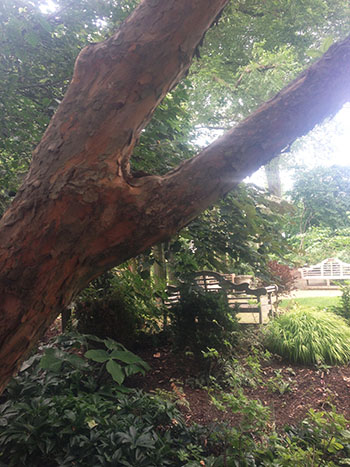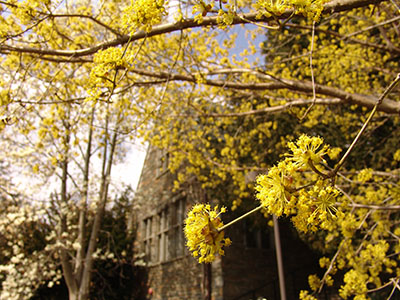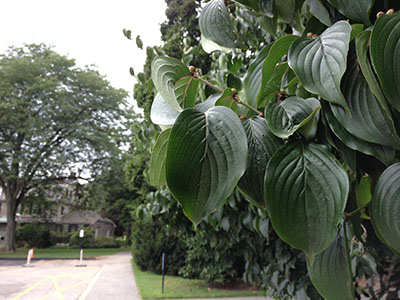Cornus mas – Cornelian cherry dogwood
![Cornus mas JTB [5]](https://www.scottarboretum.org/wp-content/uploads/2014/08/Cornus-mas-JTB-5.jpg) Timing is very closely heeded when gardening. I think the most important aspect of time when planning a garden is seasonal change. It is important to have interest in the garden during spring, summer, fall and yes, even winter. Very few plants have interesting presentations in all seasons. Cornus mas presents enormous potential with interest in every season as well as great possibilities as an accent piece.
Timing is very closely heeded when gardening. I think the most important aspect of time when planning a garden is seasonal change. It is important to have interest in the garden during spring, summer, fall and yes, even winter. Very few plants have interesting presentations in all seasons. Cornus mas presents enormous potential with interest in every season as well as great possibilities as an accent piece.
Spring: Imagine early spring. The weather is just starting to break and you are totally sick of the drab white, gray, and black of winter. One of the earliest things you will see is the bright blooming yellows of Cornus mas proudly taking one of the first steps toward the lively colors and wonders of the seasons to come. The flowers, though much smaller than those of other dogwood species (still displaying the normal four infertile bracts surrounding the umbel of diminutive fertile flowers), appear in clusters making for very interesting textures in color.
Summer: Covered with lovely, simple dogwood leaves C. mas becomes a reliable, shady tree as Spring fades into summer. Fruit trees have a special place in my heart and the dog days present the abundance promised from a long spring of flowering and pollinating. The tree sets elongated drupes that hang heavily from the tree like red olives. And what’s more? They are edible, with flavor to boot. Biting into one of the fruits straight from the tree is a unique and intense experience. First it is extremely astringent, your mouth puckers intensely as the moisture is sucked from your tongue and cheeks. Next comes a powerful tart like sour-cherries making you salivate again; but be careful, the nut in the center is as hard as a rock. Personally, I love sour things and this year I harvested, pitted, and am trying my hand at making a jam similar to sour-cherry jam with the Cornus mas drupes (very exciting).
Fall: When autumn comes we are drawn to the magnificent colors of the chlorophyll-bereft leaves left on trees leaving only their remaining pigments for nature’s color palette. We love our dogwoods for their magnificent, flaming orange-reds. Our friend C. mas is definitely no exception to the rich redness we desire and expect.

The bark has a unique style of sloughing that creates textural interest year-round. photo credit: J. Bickel
Winter: A difficult time for many plant lovers, without a doubt. We have to be more observant, look at things more closely and use our memories to plan for the next spring. This is the time when we want our multi-seasonal interest plants to shine. Cornus mas presents several interesting features, the first of which is the bark. The bark has a unique style of sloughing that creates textural interest year-round. Second is the form of the tree: a broad low vase-shape usually single stemmed, branching low and spreading wide with long, leggy, peeling branches.







No Comments